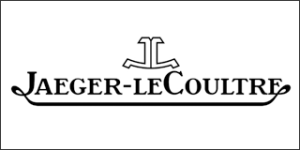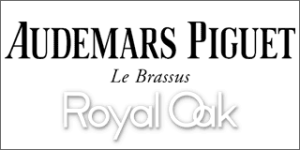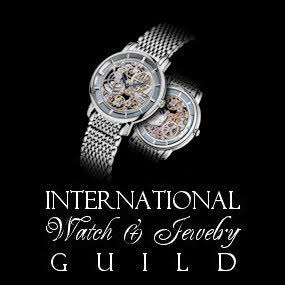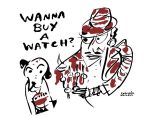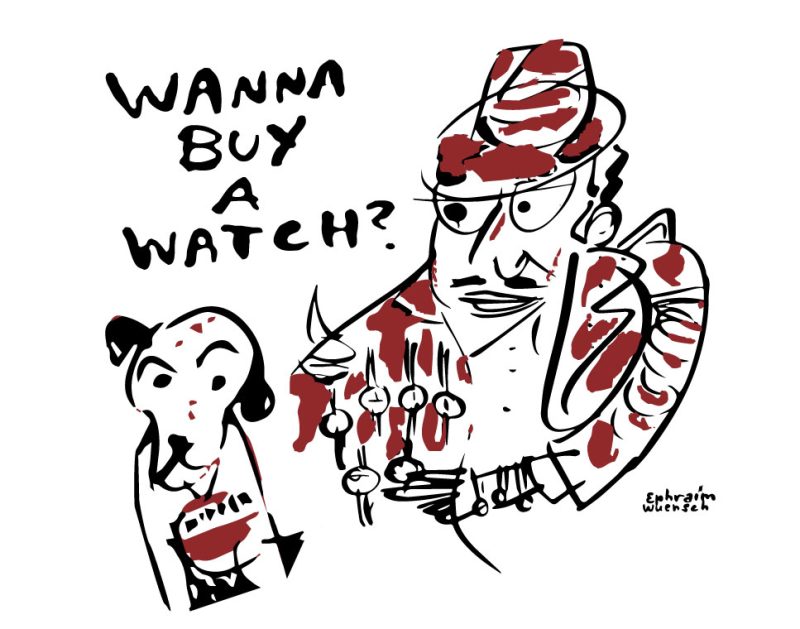Los Angeles Times: Time and Again: The Newest Trend in Timepieces Is the Watch With a Past
September 24, 1989 |IDELLE DAVIDSON | Idelle Davidson is a Los Angeles-based writer
THERE WAS NO QUESTION the collector knew what he wanted. He scanned the store’s inventory of vintage wristwatches before stopping at a rectangular, white-gold-filled Elgin, circa 1935, with stairstep ridges around its case.
“Look at this,” he said, caressing the $175 watch. “It’s linear, Deco . . . a beautiful time of design.” The collector, Manhattan Beach real estate developer Michael Begley, likened its clean lines to those of the homes he builds. Begley owns 40 vintage watches–most of which he does not wear. For him and others who do wear these collectibles, heirloom watches are more than fashion: They’re a slice of history and a shrewd investment.
In fact, vintage watches have never been more popular, according to Ken Jacobs, owner of Wanna Buy a Watch? on Melrose Avenue. He has seen sales increase more than 400% since he opened his store in 1982. That year, he sold a 1940s Rolex “bubble back,” with stainless steel and pink gold on its band and face, for $1,200. Today that watch is worth $6,000, he says.
Vintage watches are in demand partly because of the limited supply. But more than that, Jacobs says, people are rebelling against digital watches. “Digitals are technologically wonderful but ugly as sin,” he says. “They don’t offer the charm of yesteryear–the sense of returning to a simpler, happier time.”
Jacobs, a former clinical psychologist, adds that some men feel they have few ways to express themselves with fashion. “Women can adorn themselves with all kinds of jewelry, but not men. A vintage wristwatch is a very socially acceptable way for them to do that.”
And many men and women are apparently willing to pay a lot to do so. Sotheby’s reports that the prices of vintage watches sold at auction have more than doubled since ’86. Pieces by Patek Philippe are the most sought-after, followed by other Swiss watches: Vacheron Constantin, Rolex, Cartier, Audemars Piguet and some Movados. Pink gold, platinum and white gold are top sellers.
Any departure from traditional shapes or styles increases the value. Last June, for example, Sotheby’s auctioned a circa-1935 stainless-steel Patek Philippe with a sweep second hand. Because Patek Philippe watches are not usually fashioned in anything but precious metal, the watch sold for $12,000 rather than the $3,000 Sotheby’s expected.
Often customers pay a premium for prestige-name watches, not knowing the superb quality of lesser-known makes, says Sig Shonholtz, owner of the Second Time Around Watch Co. in West Hollywood. In his opinion, the less-well-known, mass-produced American Hamilton is of comparable quality to handmade vintage Patek Philippes, but Hamiltons are much less expensive. A 1930s curve-style Hamilton, for example, sells for $700. “A comparable 1930s Patek is $10,000,” he says.
To Shonholtz, a third-generation Los Angeles watchmaker, the history of a watch gives it personality and allure. Shonholtz holds up the oldest watch in his store–a Swiss-made 1880 Pavel Buhre that costs $3,000. It weighs a heavy 113 grams and its face is two inches in diameter. “What kind of a man had the arrogance, the audacity or confidence to wear a watch like this?” he wonders. He shows another, an American-made Gruen. “There’s got to be a story here,” Shonholtz conjectures. The watch is inscribed: “Winnie to Jack, 10-29-29”–the day the stock market crashed.
Shonholtz says he can often predict which watches clients will select. As he speaks, actress Demi Moore walks in, dressed in beltless blue jeans. They haggle over price a bit before she purchases two sporty ’20s-vintage Rolexes (anniversary presents for her husband, actor Bruce Willis). “A dressy watch wouldn’t have looked natural,” says Shonholtz later.
Another Shonholtz client, film producer Abbee Goldstein, owns three watches from the ’30s and ’40s. “One is beautiful, an Art Deco Gruen, and it’s very thin,” Goldstein says. “It’s actually a man’s watch, but the face is small enough that it doesn’t overwhelm my hand.”
The first wristwatches date back to about 1880, when women remade their watch pendants into bracelets, says Lance Thomas, proprietor of The Watch Co. in West Los Angeles. Men considered the wristwatch effeminate until World War I, when soldiers realized that a watch on the wrist was more practical than one in the pocket.
Today, he says, his customers claim that some watches have a “psychic aura . . . part of someone’s spirit is captured in a tangible object from another generation.”
Thomas has been selling pocket and wristwatches to serious collectors since 1974. Prices range from $99 for a gold-filled 1947 Elgin to $29,000 for an 18-karat-gold “moon face” 1955 Patek Philippe.
Such watches, he says, “are not just timepieces but mirrors of the way a person thinks. Like cars and clothes, they measure a person’s style.”




